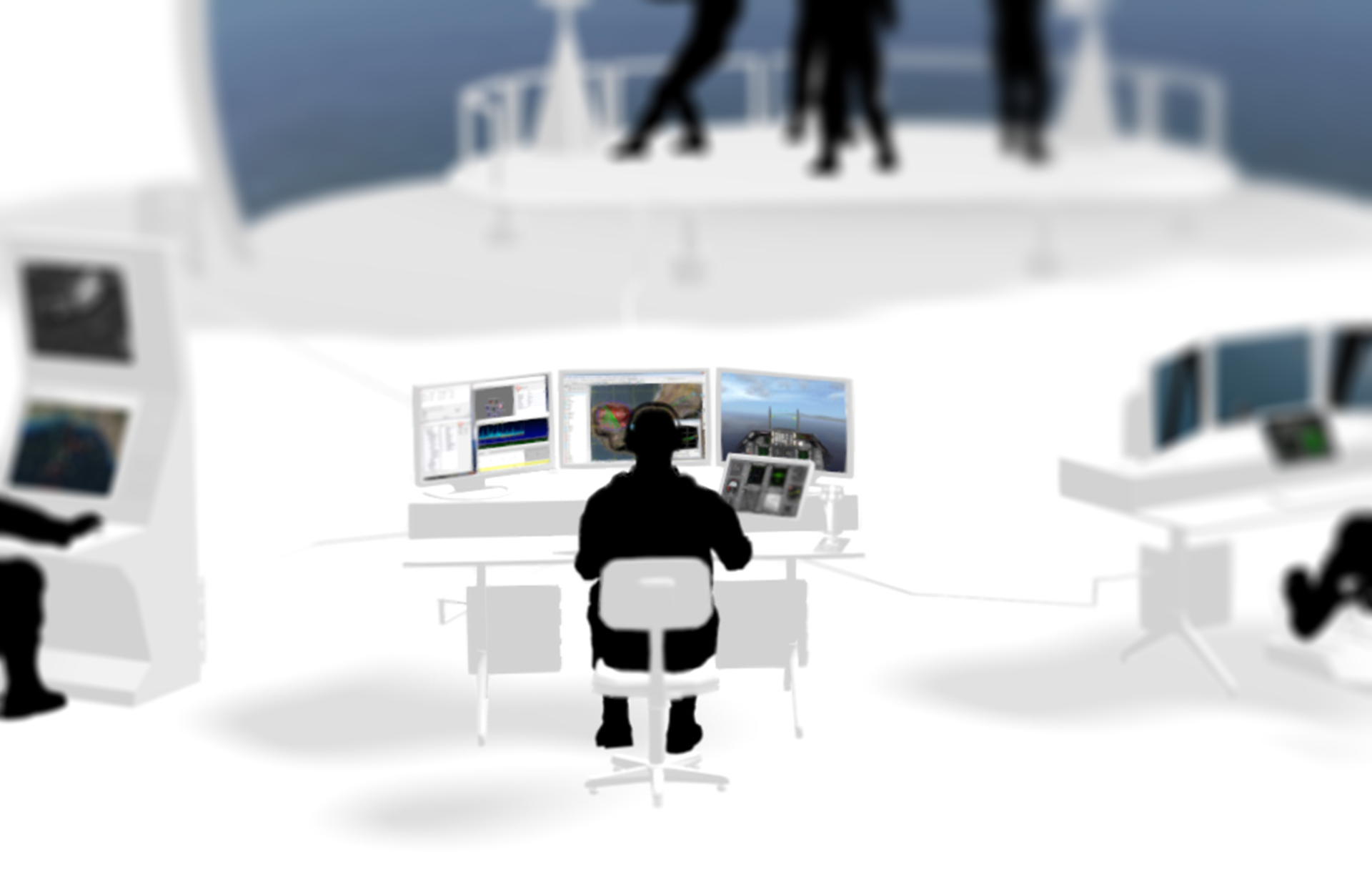Instructor Operator Stations

Where does the Instructor Operator Station fit within the system architecture?
Training events are becoming larger and more widely distributed across networked environments. Yet staffing for these exercises is often static, or even decreasing. Therefore, instructors and operators need IOS systems to help manage their tasks, including designing scenarios, running exercises, providing real-time guidance and feedback, and conducting AAR.
Instructor Operator Stations (IOS) provide a central location from which instructors and operators can manage training simulations. An effective IOS enables seamless control of exercise start-up, execution, and After Action Review (AAR) across distributed systems. It automates many setup and execution tasks and provides interfaces tailored to the simulation domain for tasks that are done manually.
How does MAK software fit within the Instructor Operator Station?
MAK has proven technologies that allow us to build and customize an IOS to meet your training system requirements.
- Simulation Control Interface – Instructors can create and modify training scenarios. Execution of the scenarios may be distributed across one or more remote systems. The instructor or operator can dynamically inject events into a scenario to stimulate trainee responses, or otherwise guide a trainee’s actions during a training exercise. Core technology: VR-Forces Graphical User Interface
- Situational Awareness – The MAK IOS includes a 2D tactical map display, a realistic 3D view, and an eXaggerated Reality (XR) 3D view. All views support scenario creation and mission planning. The 3D view provides situational awareness and an immersive experience. The 2D and XR views provide the big-picture battlefield-level view and allow the instructor to monitor overall performance during the exercise. To further the instructor’s understanding of the exercise, the displays include tactical graphics such as points and roads, entity effects such as trajectory histories and attacker-target lines, and entity details such as name, heading, and speed. Core technology: VR-Vantage.
- Analysis & After Action Review – The MAK IOS supports pre-mission briefing and AAR / debriefing. It can record exercises and play them back. The instructor can annotate key events in real-time or post-exercise, assess trainee performance, and generate debrief presentations and reports. The logged data can be exported to a variety of databases and analysis tools for data mining and performance assessment. Core technology: MAK Data Logger.
- Open Standards Compliance –MAK IOS supports the High Level Architecture (HLA) and Distributed Interactive Simulation (DIS) protocols. Core technology: VR-Link networking toolkit.
- Simulated Voice Radios – Optionally Includes services to communicate with trainees using real or simulated radios, VOIP, or text chat, as appropriate for the training environment.

